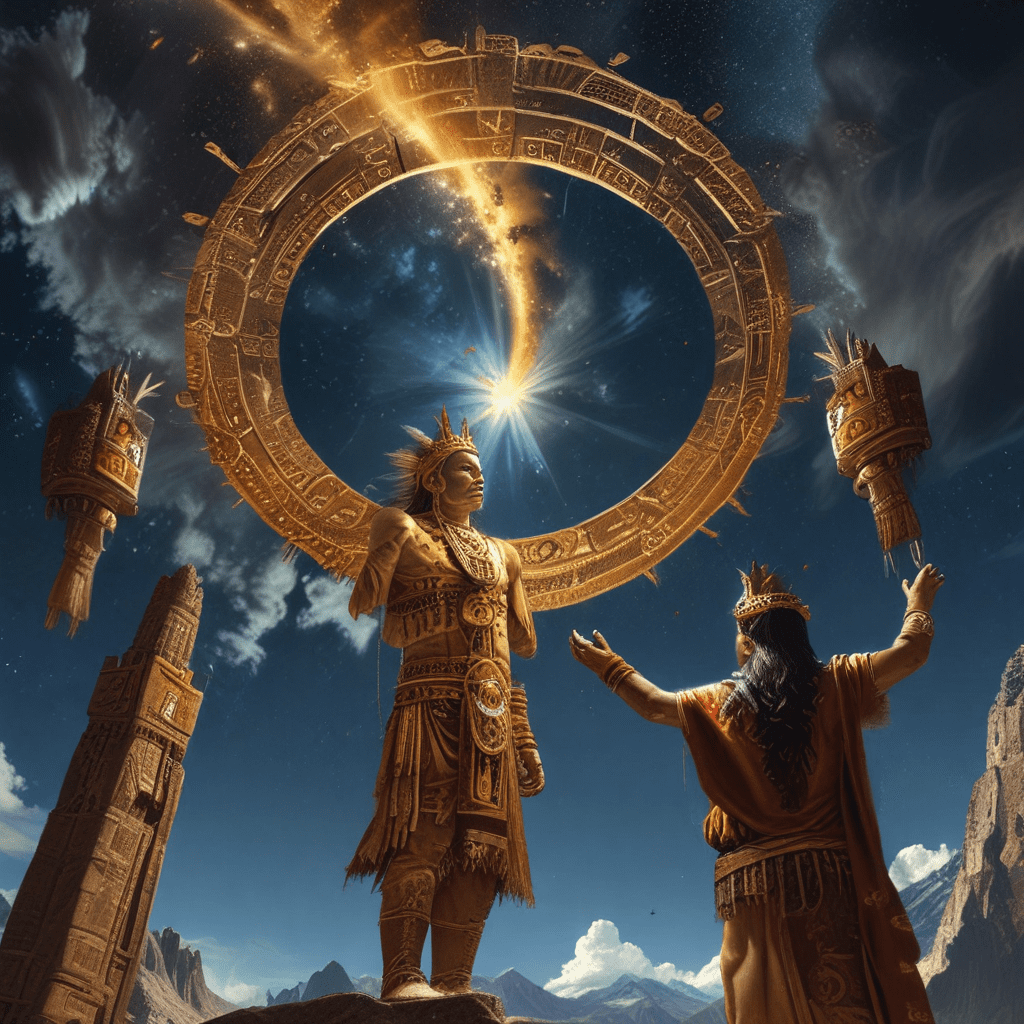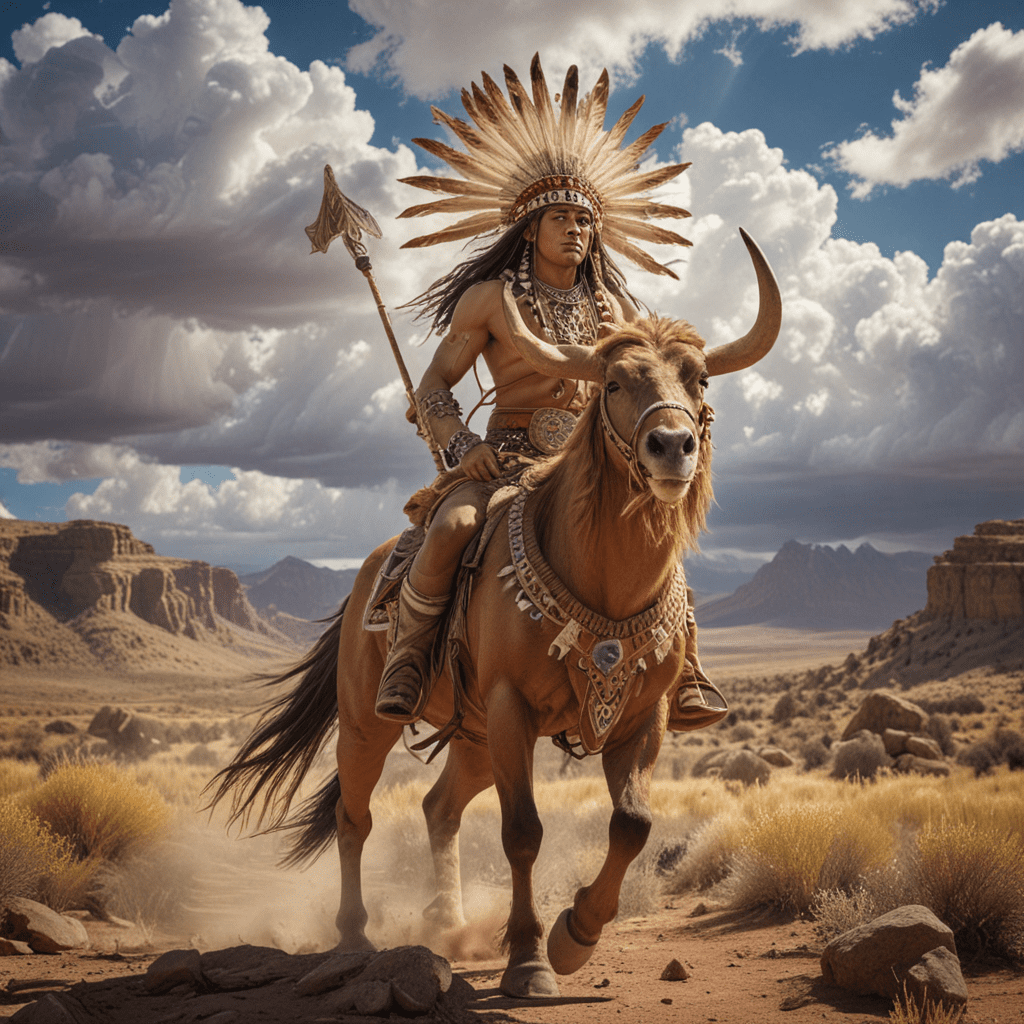The Cosmic Dance: Incan Mythology and the Celestial Sphere
The Incan Empire, a civilization that flourished in the Andes Mountains of South America, possessed a profound understanding of the cosmos and a rich mythology that intertwined with their celestial observations. Their view of the universe was not merely a collection of stars and planets but a living, breathing entity that played a crucial role in their lives. The Incan sky was a canvas upon which their gods danced, their stories unfolded, and their agricultural cycles were determined.
Incan mythology intricately weaves together the celestial bodies with their beliefs, rituals, and daily life. The sun, moon, stars, and constellations were not just celestial objects but divine beings with specific roles and powers. The Incan understanding of astronomy was deeply spiritual, grounded in the belief that the gods communicated through celestial signs and events. This cosmic dance influenced everything from their agricultural practices to their political structures, offering a unique glimpse into the ancient world.
The Inti: The Sun God and the Heart of the Incan Cosmos
At the heart of the Incan cosmos resided Inti, the Sun God, a radiant and powerful deity who symbolized life, warmth, and prosperity. Inti was considered the ultimate source of energy, giving life to all living things, and his daily journey across the sky determined the cycle of day and night. The Incan people revered Inti as their supreme deity, offering him sacrifices and prayers to ensure a bountiful harvest and favorable weather.
The Sun God's influence on the Incan culture was immense. The Incan calendar, a sophisticated system for tracking time and predicting agricultural seasons, was intricately linked to the Sun God's movements. Festivals and rituals were held to honor Inti, celebrating his power and seeking his favor. The Temple of the Sun, a majestic structure at Cuzco, the Incan capital, served as a dedicated place for worshipping Inti and observing the celestial movements.
The Moon Goddess: Mama Killa and her Influence on the Cycle of Life
Complementing Inti's role as the Sun God was Mama Killa, the Moon Goddess. Mama Killa represented the feminine principle, associated with fertility, motherhood, and the cyclical nature of life. Her phases, waxing and waning, mirrored the cycles of growth and decay, mirroring the rhythm of nature. As the moon goddess, Mama Killa had a significant influence on the agricultural practices of the Inca, guiding their planting and harvesting.
Legend has it that Mama Killa's tears, falling upon the Earth, transformed into silver, a precious metal that the Incas revered. The moon's silvery light was also linked to the nocturnal world, a realm where spirits roamed and dreams held meaning. Mama Killa's presence in the sky provided comfort and guidance to the Incan people, particularly women, reminding them of the interconnectedness of life and the power of feminine energy.
The Milky Way: The River of Stars and the Path to the Afterlife
The Milky Way, a luminous band of stars stretching across the night sky, held a special significance for the Incan people. They referred to it as “Mayu”, meaning "river" in Quechua, the language of the Incas. This river of stars, they believed, transported souls to the "Hanan Pacha", the celestial realm where the Incan deities resided. It symbolized a path of transformation and a bridge between the earthly realm and the spiritual realm.
The Milky Way played a critical role in Incan mythology, representing the connection between life and death. It served as a reminder that life was a journey, culminating in a return to the stars. The Incan people believed that after death, their souls ascended to the Milky Way and then travelled to the "Hanan Pacha", where they would reside with the gods and their ancestors.
The Pleiades: A Guide for Planting and Harvesting
The Pleiades, a cluster of stars visible in the night sky, held profound significance for the Incan people. They referred to this constellation as "Coso", which meant "small star" in Quechua. To the Incas, the appearance of the Pleiades in the sky marked the start of the wet season and the opportune time for planting. As the Pleiades moved across the sky, they served as a guide for the Incan farmers, signaling the best time for planting and harvesting.
The Incan farmers relied heavily on the Pleiades for their agricultural practices. Their knowledge of the constellation's movements allowed them to predict the timing of the rainy season and coordinate their farming activities accordingly. The Pleiades became a symbol of abundance and fertility, signifying the bounty of the Incan harvest.
The Southern Cross: A Constellation of Power and Authority
The Southern Cross, a constellation prominent in the Southern Hemisphere, held a special place in Incan mythology. Known as “Chakana” in Quechua, meaning "bridge", the Southern Cross was seen as a symbol of power, authority, and cosmic balance. Its four bright stars represented the four cardinal directions, symbolizing the interconnectedness of all things.
The Incan rulers, the “Sapa Inca”, were believed to be descended from the stars of the Southern Cross, making it a powerful symbol of rulership and divine legitimacy. The “Chakana” was often incorporated into Incan art and architecture, serving as a reminder of the cosmic order and the authority of the Incan Empire.
The “Chakana” was also associated with the “Pachakuti”, a concept that encompassed the cycles of time, the transformation of the universe, and the rise and fall of civilizations. The Incan people believed that their own civilization, like the stars of the Southern Cross, was destined to rise and fall, following the cosmic rhythms of the universe.
The Incan Calendar: A Cosmic Blueprint for Agriculture and Ritual
The Incan calendar, known as “Inti Raymi”, was a sophisticated system for tracking time and predicting agricultural seasons. It was based on the movements of the sun, moon, and stars, reflecting the Incan belief that the cosmos played a crucial role in their lives. The calendar had two main cycles: a solar year of 365 days and a lunar year of 354 days.
The Incan calendar was divided into twelve months, each named after a specific event or agricultural activity. For example, the month of "Pachamama" (Earth Mother) marked the time for planting, while the month of “Inti Raymi”, the Sun Festival, celebrated the peak of the harvest season.
The Incan calendar served as a guide for agricultural practices, ensuring timely planting and harvesting. It also played a vital role in religious life, dictating the timing of festivals and rituals dedicated to various deities. The calendar was a testament to the Incan people's deep understanding of the cosmos and their ability to harness its rhythms for the benefit of their society.
The Temple of the Sun: A Monument to Celestial Observation
The Temple of the Sun, located in the Incan capital of Cuzco, was a magnificent structure dedicated to the worship of Inti, the Sun God. Built with meticulous precision and adorned with exquisite craftsmanship, the temple was a testament to the Incan people's reverence for the celestial bodies and their advanced knowledge of astronomy.
The temple was designed to align with the sun's movements, allowing for accurate observations of solstices and equinoxes. The placement of windows allowed sunlight to illuminate specific areas at precise times, creating a dramatic and symbolic effect. The temple was a place for religious rituals, astronomical observations, and the study of the cosmos.
The Temple of the Sun served as a testament to the Incan people's deep understanding of the universe and their ability to incorporate celestial knowledge into their architecture and religious practices. It stands as a powerful reminder of the Incan civilization's sophisticated understanding of astronomy and their reverence for the celestial bodies.
Theories of Incan Astronomy: A Blend of Observation and Mythology
Incan astronomy, a fascinating blend of observation and mythology, provided a rich tapestry of knowledge about the celestial bodies. Their understanding of the cosmos was deeply intertwined with their religious beliefs, with the stars and planets serving as both guides and manifestations of divine power.
The Incan people were keen observers of the night sky, meticulously tracking the movements of the stars and planets. Their observations led to the development of a sophisticated calendar, which was crucial for their agricultural practices and religious rituals. Astronomers were highly respected members of Incan society, their knowledge valued for its practical and spiritual significance.
The Incan view of the universe was not only based on observation but also deeply intertwined with mythology. Celestial bodies were associated with specific deities and gods, their movements interpreted as messages from the divine realm. This blend of observation and mythology created a unique understanding of the cosmos, where the celestial sphere was a canvas upon which stories unfolded and divine messages were imparted.
The Legacy of Incan Astronomy: A Window into the Ancient World
The legacy of Incan astronomy provides a fascinating window into the ancient world, offering insights into their beliefs, practices, and understanding of the universe. Their sophisticated calendar, alignment of temples, and reverence for the celestial bodies reveal a civilization deeply connected to the cosmos.
Incan astronomy offers a unique perspective on the ancient world, showcasing the interconnectedness of culture, religion, and astronomy. The meticulous observations and rich mythology of the Incan people continue to inspire awe and fascination, reminding us of the timeless human desire to understand the mysteries of the universe.
FAQ
Q: What were the Incan people's primary motivations for studying astronomy?
A: The Incan people studied astronomy for both practical and spiritual reasons. They needed to track the seasons for agriculture, and they also believed that the stars and planets held spiritual significance.
Q: How did the Incan calendar influence their daily lives?
A: The Incan calendar guided their agricultural practices, ensuring timely planting and harvesting. It also dictated the timing of religious festivals and rituals.
Q: What role did the Temple of the Sun play in Incan society?
A: The Temple of the Sun was a place of worship, astronomical observation, and the study of the cosmos. It served as a testament to the Incan people's deep understanding of the universe.
Q: How did the Incan people use the Pleiades?
A: The Incan people used the Pleiades to track the seasons. The appearance of the Pleiades marked the start of the wet season and the opportune time for planting.
Q: Did the Incan people believe that the Milky Way was a path to the afterlife?
A: Yes, the Incan people believed that the Milky Way was a path to the afterlife. They saw it as a bridge between the earthly realm and the spiritual realm.



